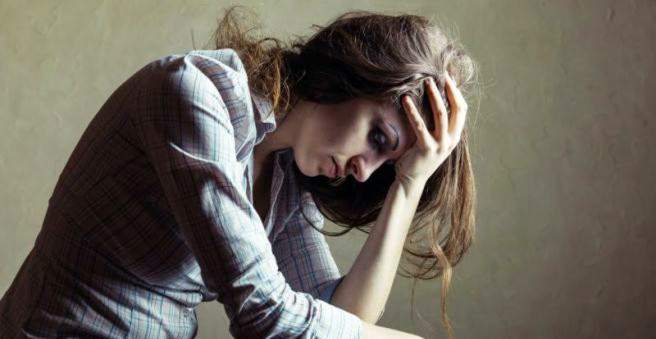Dysthymia is an attenuated form of depression. However, the depressive symptoms persist for several years. They severely restrict the lives of those affected and cause great suffering. Read all important information about dysthymia here.

Dysthymia: description
Dysthymia or dysthymia is a chronic depression. However, the symptoms are much weaker than with a classic depressive episode. Previously, dysthymia was referred to as neurotic depression. The concept of neurosis is now obsolete.
Who is affected by a dysthymia?
The probability of developing dysthymia in his life is around six percent. 75 percent of chronic depression begins before the age of 21. Nevertheless, the dysthymia can occur at any age. Both children and the elderly are affected. In children, this form of depression is equally common in girls and boys, while in adulthood more women suffer from it.
Dysthymia: symptoms
The symptoms of dysthymia are the same as those of classic depression – albeit in a less pronounced form. These include:
- reduced drive
- sleep disorders
- little self-confidence
- difficulty concentrating
- social withdrawal
- Loss of interest
- diminished conversational skills
- pessimistic view of the future
- Difficulties with routine tasks
- Tendency to cry
- hopelessness
Dysthymia: causes and risk factors
The exact causes are not known, as in the classic depressive episode. Probably dysthymia is also a combination of genetic, biological and psychosocial factors. Studies on the causes of chronic depression found that many patients experienced early trauma, such as abuse.
Dysthymia: examination and diagnosis
According to the International Statistical Classification of Diseases and Related Health Problems (ICD-10), the following criteria for diagnosing dysthymia must be met:
- The depressive symptoms show constant over a period of at least two years or occurs regularly in this period. A normal-mood phase does not last much longer than several weeks. A slightly increased mood (hypomania) does not occur.
- The phases are not so severe that they meet the criteria for recurrent depressive disorder.
- At least three of the above symptoms should be present during a depressive period.
Dysthymia: treatment
According to the recommendations of the German Society of Psychiatry, Psychotherapy and Neurology (DGPPN), a dysthymia should be treated with a combination of antidepressants and psychotherapy. Psychotherapy alone is not as effective at dysthymia as the administration of medication. Serotonin reuptake inhibitors (SSRIs), which increase the levels of serotonin in the brain, are now prescribed as drugs. They make an important contribution to the regulation of the messenger substances that are disturbed in people with depression.
Very effective therapies are cognitive behavioral therapy, analytical forms of therapy and interpersonal therapy. Supportive support by the therapist is especially important at the beginning of the treatment, because the effect of the medication only after a few days or even weeks occurs.
A crucial part of the therapy is the education of the patient about the disease (psychoeducation). People who suffer from dysthymia often have difficulty recognizing the disorder. They usually suffer from the disease for a long time and have become accustomed to it to a degree. In addition, the signs are not so serious that you get the same help. If there is evidence of dysthymia, sufferers or relatives should contact a doctor or psychotherapist. The treatment will help patients to regain a better quality of life.
Dysthymia: disease course and prognosis
Above all, the problem with this mental disorder is that it is rarely recognized because of the less pronounced symptoms. If chronified depression is not treated, those affected often suffer life-long effects. For even a weak depression leads to restrictions in the professional and social life.
In addition, 40 percent of patients develop a major depressive episode over time. Are a depressive episode and one dysthymia at the same time, this is referred to as “double depression” or double depression. It then shows chronically weak depressive symptoms, which are increasing rapidly in the meantime. This form is particularly difficult to diagnose and due to the severity of the disease also a highly refractory depression. For the treatment of double depression, as with dysthymia, the best results are seen when psychotherapy and medication are combined.